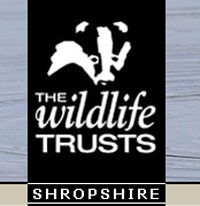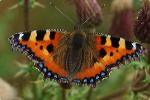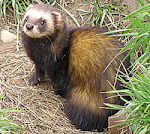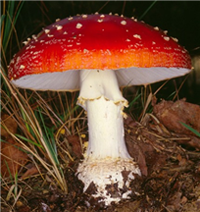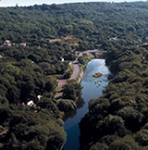Wednesday 15th October 2025, Bagbatch
This week we visited the home of a member of the group, in All Stretton. The site is 12 acres of semi and unimproved grassland, hawthorn scrub and open woodland with some mature oak, ash and sycamore and dingle woodland. It is a Local Wildlife Site.
And it has a compost heap.
Once we had all arrived and readied ourselves, we set off to explore the site. We moved into a large pasture.
As soon as we entered the field the compost heap was spotted. Several of the group diverted to delve into its delights.
An early find in the heap was a pseudoscorpion. For once it was not one of the two species that we sometimes find. This was a Compost Chernes, Pselaphochernes scorpioides, which was, perhaps, not that surprising in view of the habitat in which it was found.
A target species of compost searches is Lesser Earwig, Labia minor, which prefers warm locations such as compost heaps. And initial searches found a first instar nymph of the species.
Another inhabitant of compost heaps is a small sheet-web spider, Ostearius melanopygius. One was found in the heap.
Whilst this breakaway group delved into the depths of the compost heap the rest of us carried on doing what we normally do, working our way across the pasture towards a gate that gave out onto a path through some woodland to another field.
It was obviously very hard work as a few of us had to take a rest before entering the wood. A spade brought along (for purposes to be described later) proved to be a very good leaning post.
Onwards…
And, as it happened, upwards.
On the way through the wood, we came across this fungus.
Having no-one with us who identified fungi, we resorted to AI and an app named Obsidentify, which was 100% certain it was Parasola plicatilis. On a second check it changed its mind and stated with lower confidence that it was Parasola plicatilis sensu lato (i.e. one of a group of very similar species). With that my confidence in its ability was eroded and I noted it as Parasola species!
A Laburnum bush provided our next species, a moth.
I aggre, this does not like a species of moth. It is, however, the evidence that the larva of the moth Leucoptera laburnella resided in this leaf, eating the leaf tissue and leaving a trail of its droppings in a recognised pattern.
Our next photograph is of something that does look like an insect, although not an adult. It is the larva of a Glow-worm, Lampyris noctiluca.
And just before lunch, suction sampling of the vegetation revealed a globular springtail, Allacma fusca.
We were now in the second field which is maintained by a small flock of Soay sheep. As they were nowhere to be seen we decided to lunch close to an old Ash that had seen its best days.
After lunch we continued to explore this field.
The sheep are there in the far distance, in front of the stables, in the above photograph.
Inspection of an oak revealed a wood-like Cola-nut gall caused by the asexual generation of the gall wasp Andricus lignicola.
More fungi.
These were identified as Glistening inkcap, Coprinus micaceus.
All the while the sheep were keeping watch over us.
Then something spooked them, and they spent the next few minutes running hither and thither.
We made for the barn, which was fenced off from the field, and left the sheep to settle back into their normal routine.
After bimbling around the grassland for a while we split into two groups. One group continued circumnavigating the site, the other returned to the compost heap and the garden of the house.
As those of us who continued the round trip emerged into a field the purpose of the spade was revealed.
It was used to cut a squarish turf from the field, maybe 2 or 3 inches deep. The turf was then carefully pulled apart to reveal…
Worms.
It was very surprising how many worms of several different species were packed into that one turf. I cannot recall ever looking for these creatures on any of our outings.
Unfortunately, no-one thought to photograph this historic event.
Meanwhile a pool in the garden that held the compost heap was investigated and yielded a dragonfly nymph that may be a Southern Hawker, Aeshna cyanae.
More, careful inspection of the contents of the compost heap revealed:
A female Lasser earwig;
A woodlouse that is not one of the five or so species we normally come across, Porcellionides pruinosus;
And another Compost Chernes…
But this had eggs attached rather precisely around the edge of its abdomen.
As the title of this ramble announces, the compost heap turned out to be a Heap of Delights.
My thanks to the owner for giving us permission to do what we enjoy doing, My gratitude to the photographers for their excellent images.






















































